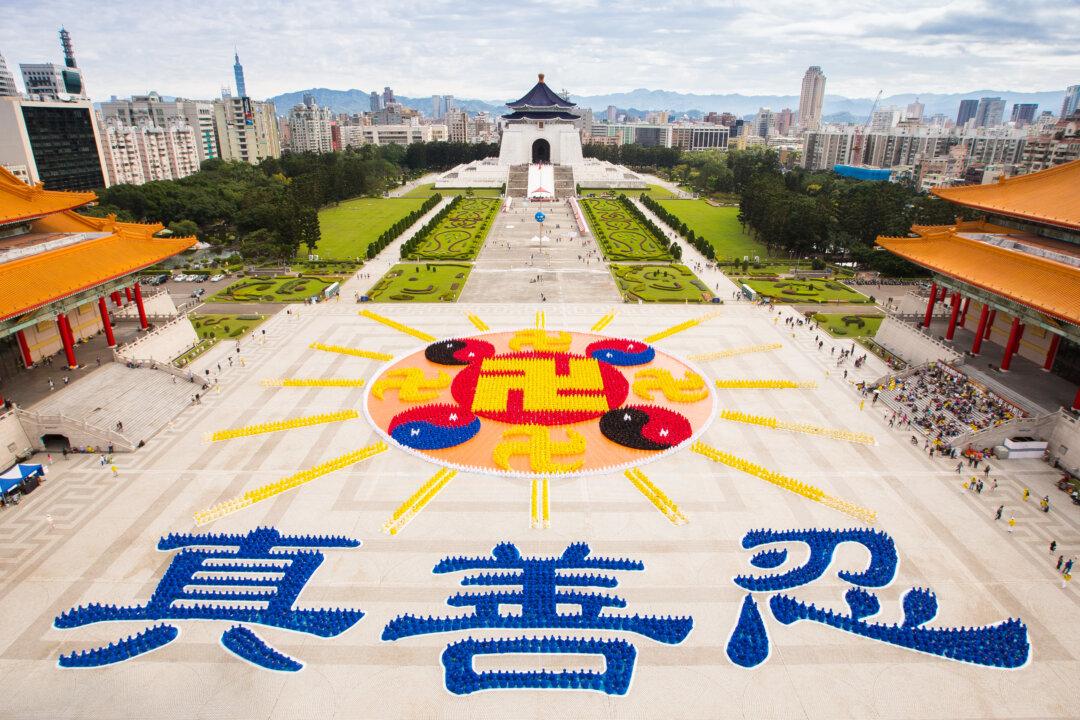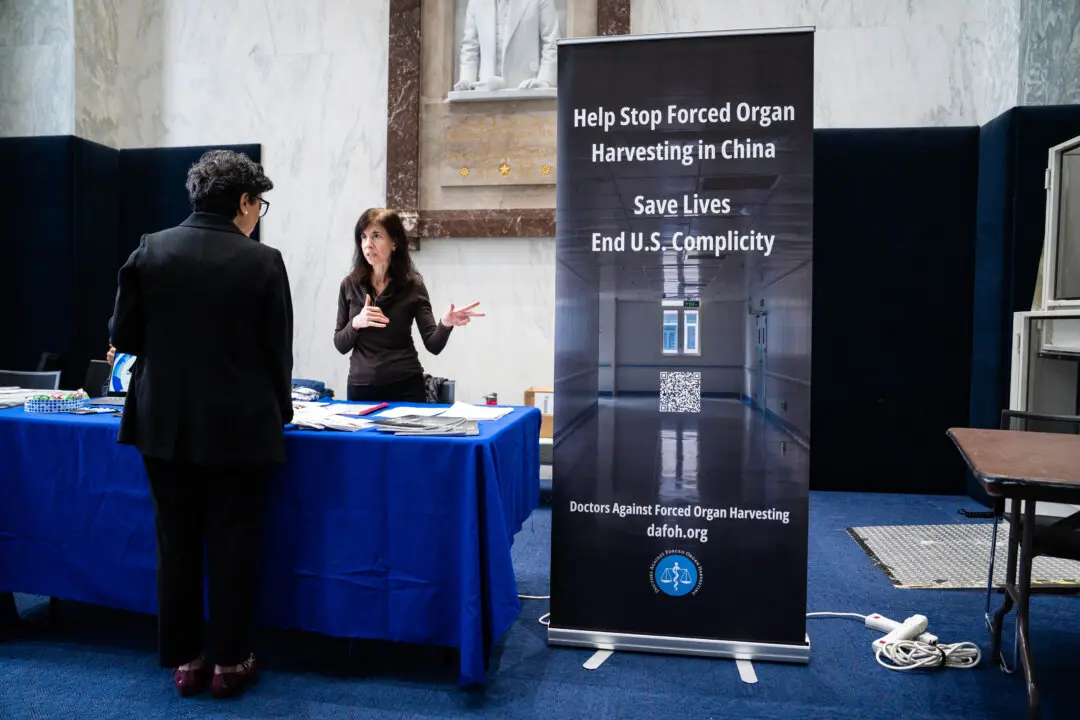TAIPEI, Taiwan—After two days of intensive labor and preparation, a huge symbol appeared center stage at Taiwan’s Liberty Square, named for its role in the island’s transition from one-party rule to democracy.
On Nov. 26, wearing yellow, blue, red, white and black clothing, about 6,300 practitioners of the spiritual discipline Falun Gong formed a large emblem along with the three Chinese characters for truthfulness, compassion, and tolerance, the core teaching of Falun Gong. The symbol, called “falun” in Chinese and meaning “law wheel,” includes the traditional Buddhist “srivatsa” and Taoist “taiji.” It is the emblem of Falun Gong, also known as Falun Dafa (Great Way of the Law Wheel).





